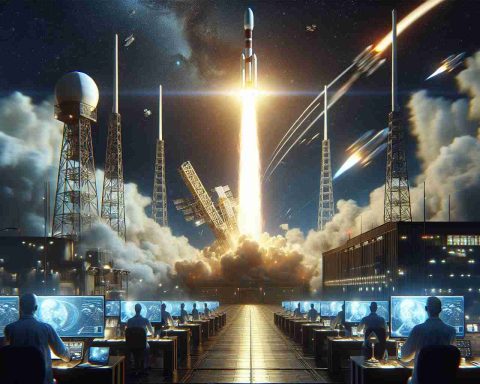Exploring New Heights in Space Technology
India’s space agency has recently made headlines by successfully launching two advanced satellites for the European Space Agency (ESA). This groundbreaking mission aims to explore innovative formation flying techniques that could pave the way for the creation of “virtual satellites.”
The endeavor known as Proba-3 showcased a flawless launch sequence with the PSLV-XL rocket, featuring stunning video footage that documented crucial stages like satellite separation and ignition. Following a brief preparatory period, the satellites are set to establish a secure tandem orbit, signaling the start of their critical operations.
The payloads, comprising the Coronagraph and Occulter, are engineered to maintain exceptionally precise positions relative to one another, measured in arc-seconds. This meticulous alignment is necessary as the Disc-shaped Occulter will interpose between the Coronagraph and the Sun, enabling the Coronagraph to capture images of the Sun’s corona—a phenomenon only visible during rare solar eclipses.
Throughout their mission, these satellites will alternate between tightly synchronized formation flying and passive drifting to conserve energy. Their performance is expected to demonstrate key techniques in satellite coordination, which could revolutionize future space missions involving complex satellite arrays.
ESA anticipates that the successful implementation of these formation flying capabilities will advance various applications including Earth observation and satellite servicing, while also providing insights for future missions exploring deeper into our solar system.
Pioneering Space Technology: India’s Mission to Virtual Satellites
India’s space agency, the Indian Space Research Organisation (ISRO), has achieved a significant milestone by successfully launching two sophisticated satellites for the European Space Agency (ESA). This mission is particularly groundbreaking as it implements advanced formation flying techniques that could potentially lead to the development of “virtual satellites.”
Innovative Features of the Mission
The project, named Proba-3, is noteworthy for its execution via the PSLV-XL rocket, which has become synonymous with reliable satellite launches. Key features of this mission include:
– Advanced Payloads: The Coronagraph and Occulter payloads are designed with extreme precision, capable of maintaining their relative positions to within arc-seconds. This level of accuracy is critical for effectively capturing images of the Sun’s corona, which is typically only observable during solar eclipses.
– Formation Flying Techniques: The satellites will engage in a coordinated dance of flying in tight formation and passive drifting, a strategy devised to conserve energy throughout their operational lifespan.
Use Cases and Future Applications
The implications of the Proba-3 mission extend beyond just solar observation. Critical applications anticipated from this mission include:
– Earth Observation: Enhanced techniques for Earth monitoring and imaging, providing more accurate data for climate and environmental studies.
– Satellite Servicing: Advanced coordination abilities could revolutionize how satellites are maintained and serviced in orbit, leading to cost savings and increased longevity of space assets.
– Deep Space Missions: The success of formation flying could inform future missions aimed at exploring more distant celestial bodies, making extensive satellite arrays more feasible.
Trends and Insights
Market Trends: The interest in formation flying technologies is on the rise as space agencies and private companies seek to maximize the utility and capabilities of their satellite fleets.
Innovations in Space: Formations that enable “virtual satellites” suggest a paradigm shift in satellite deployment and operational strategies, emphasizing collaboration in space operations.
Limitations and Challenges
While the Proba-3 mission marks a significant leap forward, challenges remain.
– Technical Challenges: Maintaining precise synchronization in the harsh conditions of space poses significant technical hurdles.
– Energy Management: Efficiently managing power for extended missions, particularly during passive drifting, requires cutting-edge technology.
Security and Sustainability Aspects
As space becomes congested, security through advanced positioning and monitoring of satellites will become vital. Additionally, sustainable practices in satellite design and deployment processes will be essential to minimize space debris and ensure long-term orbital ecosystems.
Pricing and Market Analysis
With an increasing number of countries and private entities launching satellites, the pricing landscape is evolving. The cost-effectiveness of deploying satellites using techniques such as formation flying could reshape market dynamics, providing more affordable options for access to space.
For a deeper exploration into the advancements in space technology and satellite integration, visit ISRO.
The legacy of missions like Proba-3 is poised to redefine our understanding of space operations, pushing the boundaries of what is technically possible and imagining the future of satellite communication and observation.








